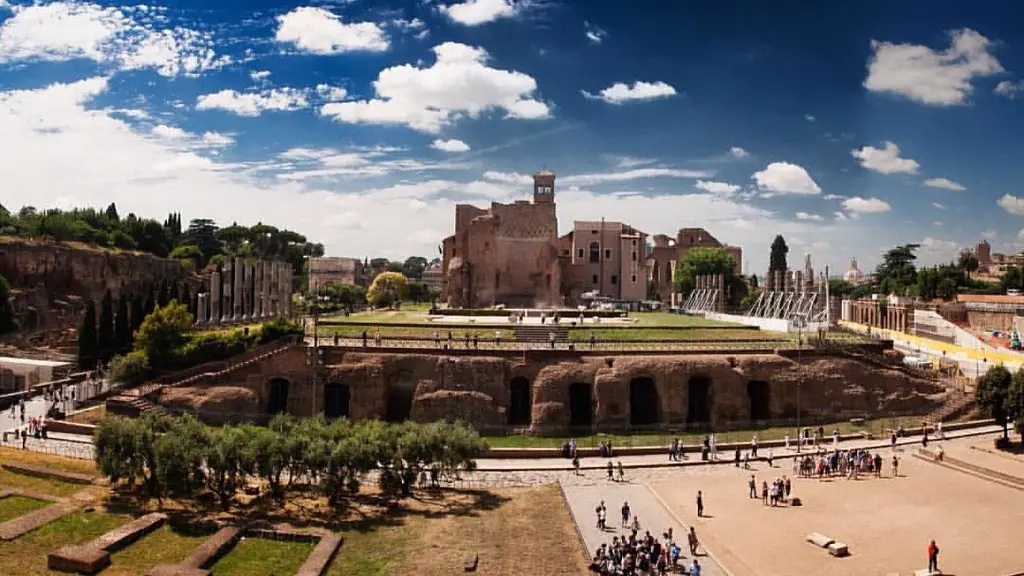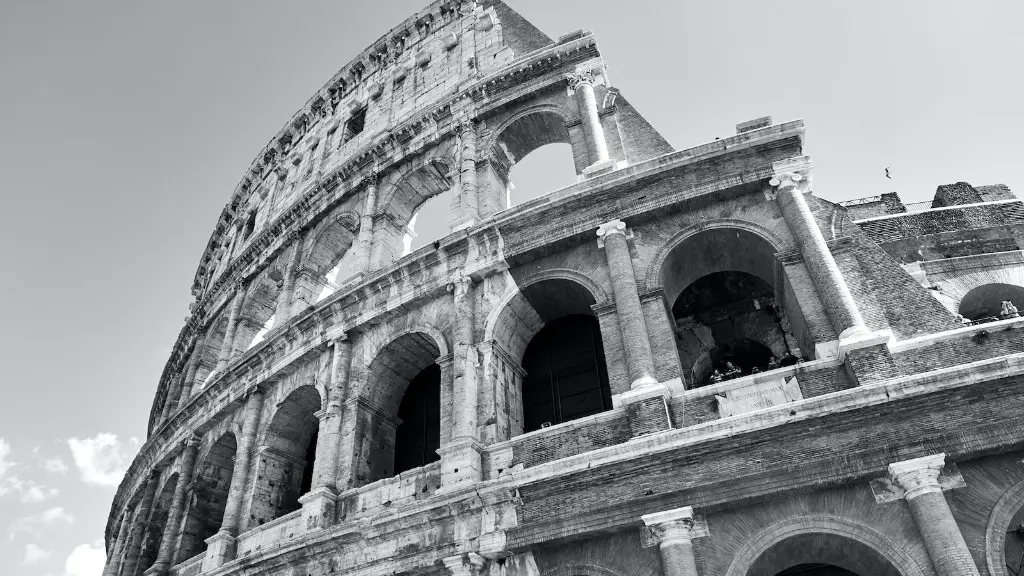Introduction
The heart of Ancient Rome was the nucleus around which great civilization sprang forth and seen humanity progress in leaps and bounds. Once a small city-state, Rome was eventually able to expand its vast empire. Eventually, upon its fall, the importance of Rome’s value to its people and its place in the history of the world was undeniable. But the centerpiece of all its greatness was the Eternal City’s eternal heart. This article will explore the various aspects of Ancient Rome’s deep-rooted culture, its flair for the grandiose, its dedication to its people, and its ambition to be a greater force of good on the world stage.
Rome’s Flourishing Economy and Trade
Rome was able to reach far-reaching heights due to its flourishing economy, which was largely thanks to deeply entrenched and complex trade networks. Traversing both lands and seas, these networks brought goods from across the Roman Empire and connected Rome to the far reaches of the known world. This integration of many cultures into the grand economy of Rome was crucial for its success. Additionally, the coinage of Rome heavily supplemented their power and leverage, as the coins were used to both trade within the Empire and urged on foreign alliances.
Rome’s Great Works of Architecture
Rome’s grandiose works of architecture can still be seen from the Baths of Caracalla to the Coliseum. Specializing in grand and lavish monuments, the people of Rome sought to represent their power and strength through their exceptional monuments, often in a wasteful manner.These projects consumed tons of resources (mostly slaves,) and required a lot of money. This use of resources was a symbol of power, and the grand works still impress us today.
Rome’s Military Might
The Imperial Roman military was an awe-inspiring machine. Led by brilliant tacticians, the well-equipped forces traversed the known world and secured the far-reaches of the Empire. The ambition and relentless drive of Ancient Rome was summed up in the form of its military; a compassionate but powerful indication of their greatness across the land. Moving from victory to victory, the military was able to cleanly consolidate many other civilizations and tribes into the ever-growing culture of Rome.
Rome’s Commitment to Education and Well-Being
Largely due to the rule of the Five Good Emperors, the civilization of Rome was marked by its commitment to its citizens’ wellbeing and education. Tax reform, generous stipends, and a celebration of culture and diversity were results of this regime. The commitment to education can still be seen in the works of especially Roman citizens such as Marcus Aurelius.Conundrums of politics and philosophical queries have been pondered by those who walk in the steps of those who called Rome their home.
Rome’s Influence on Religion and Philosophy
In addition to mathematics and science, Rome’s influence in the realms of religion and philosophy was similarly expansive. From the adoption of Christianity as the state religion to the proliferation of Stoicism, Epicureanism and Platonic philosophies, the heart of Ancient Rome was an amphitheater for the mind, body, and soul. Although many of the philosophies would become heavily revised and morphed over the centuries, their groundwork was laid in the meanders of Ancient Rome’s all-encompassing philosophy.
Rome’s Influence on Arts and Literature
The arts and literature of Rome have left their respective marks on the world. The scope of their influence in the realm of creativity is colorful in the very sense of the word. From the works of Virgil, Cicero, and Pliny the Elder, to the expansion of Mosaics, Open Air Theatres, and the insatiably astounding Coliseum, it is clear that the empire brimming with creativity had incredible potential in the form of entertainment and expression.
Conclusion of Ancient Rome’s Heart
Throughout their rule, Ancient Rome was able to form an unrelenting drive and ambition within the hearts of its citizens, forming an incredibly well-rounded and powerful society. From the bustling trade networks of their economy, to the grand and lavish architecture, to their commitment to both education and military might, to their extraordinarily far-reaching influence in literature, science, philosophy, and the arts, it is not difficult to see why the heart of Ancient Rome’s was so central to the success of the Roman Empire.

